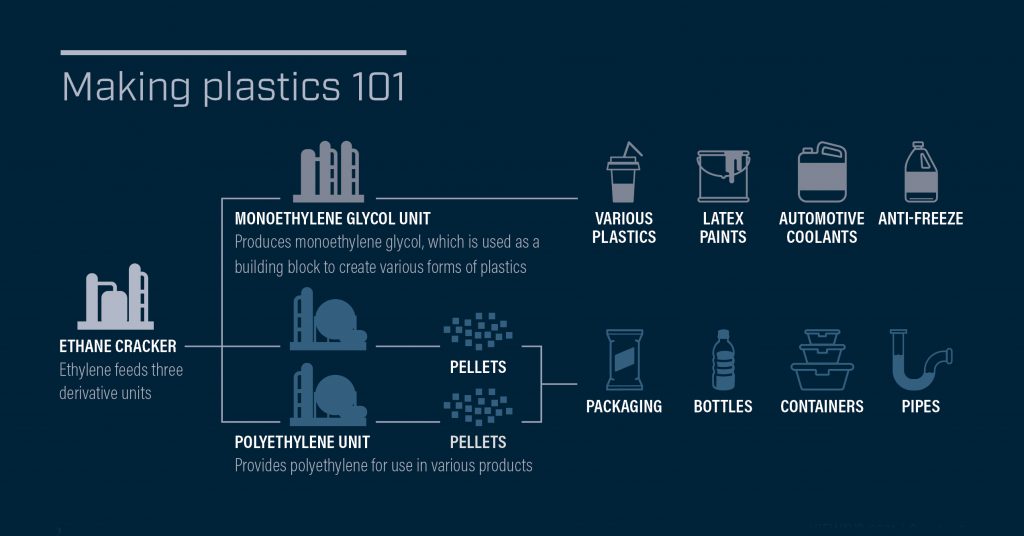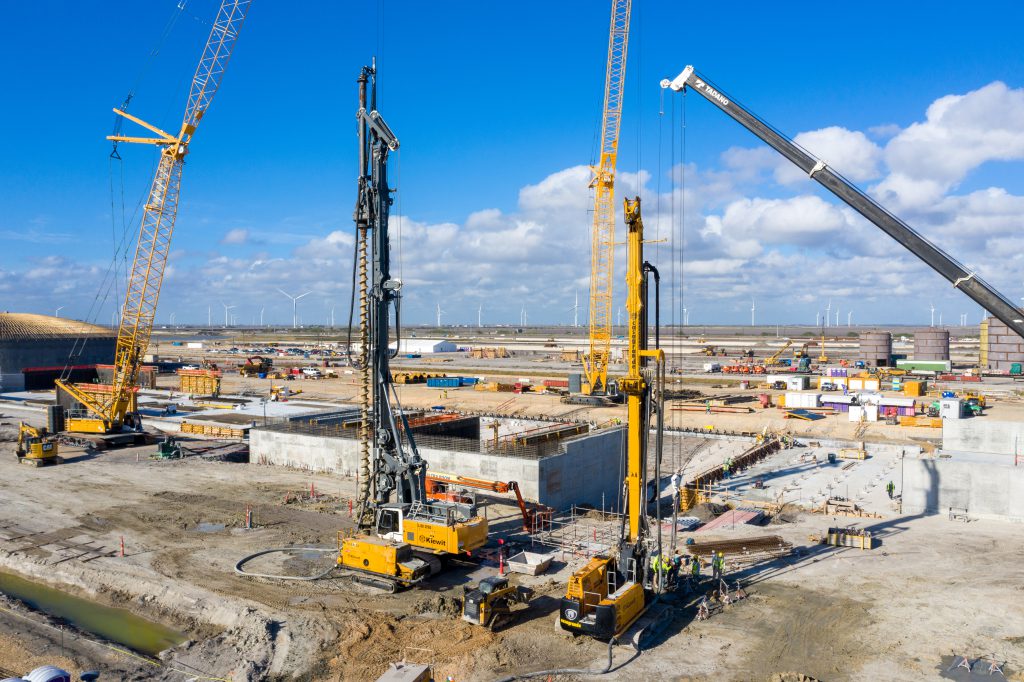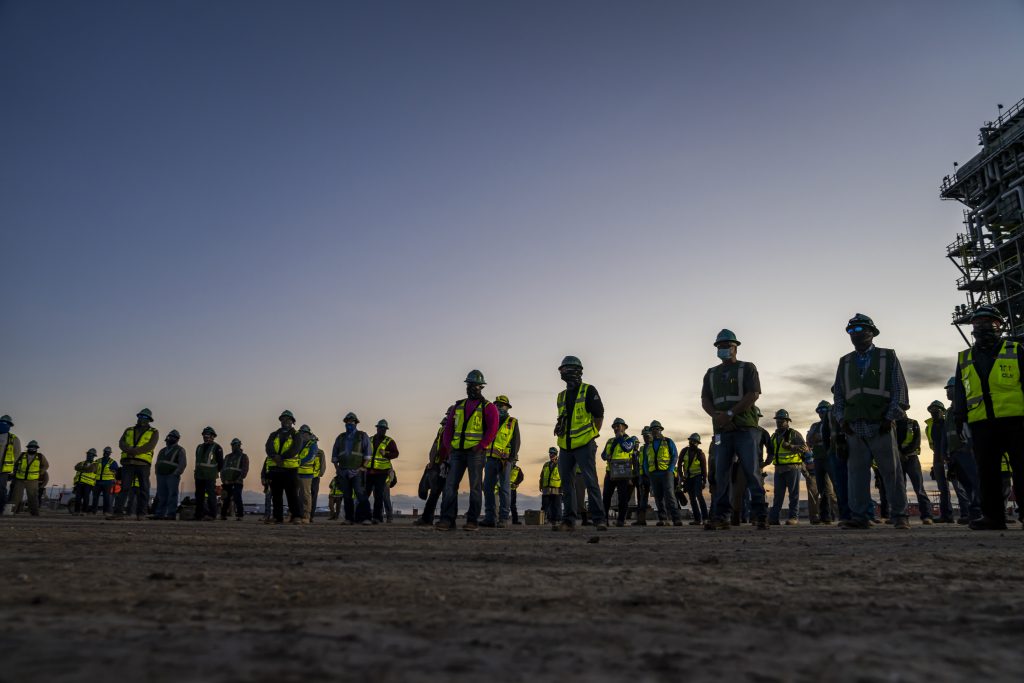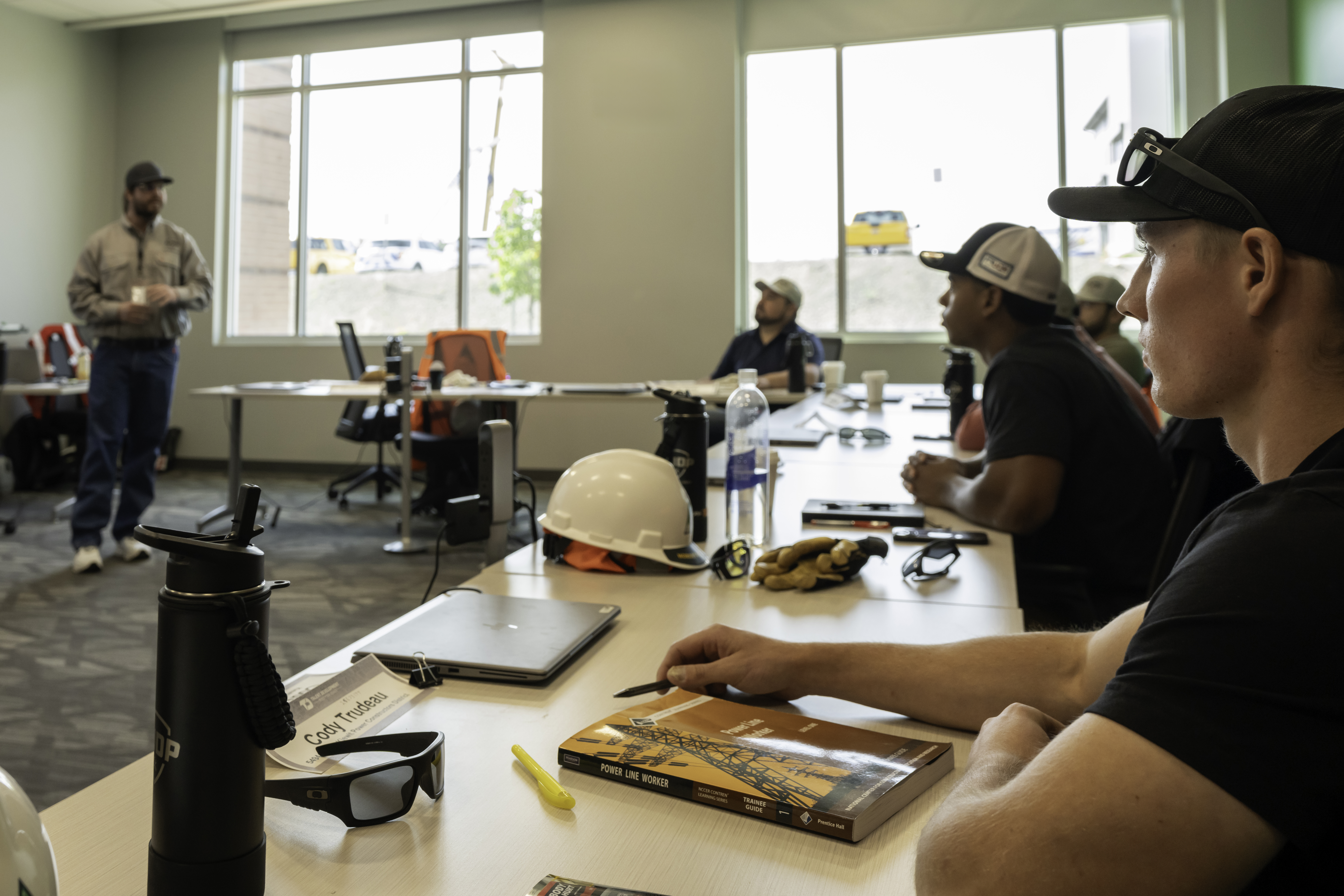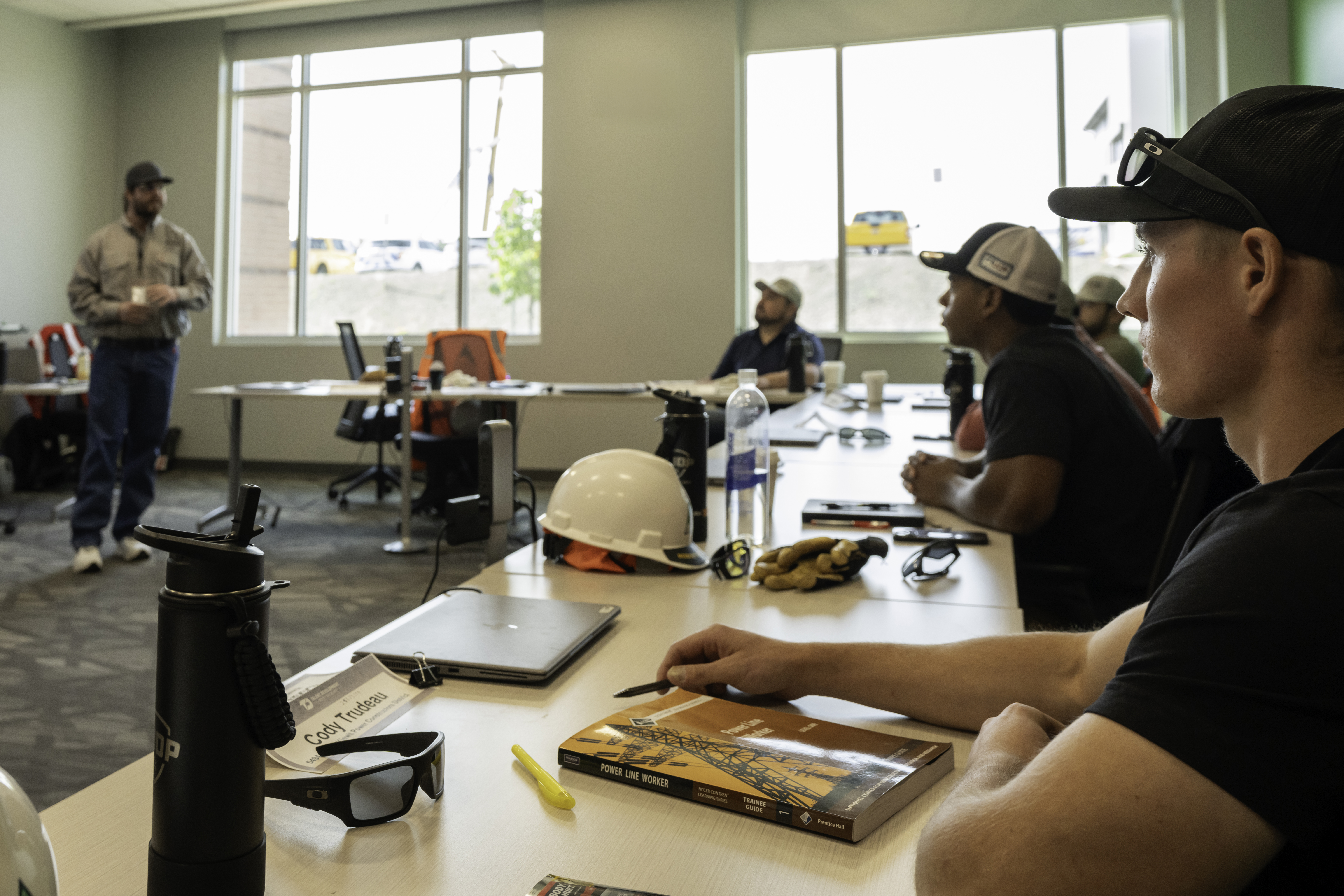Under normal circumstances, transforming a Texas cotton field into a multibillion-dollar plastic manufacturing facility would be quite a feat. But building a world-class plastics plant during a global pandemic — that takes nerves of steel.
To build a client’s vision in the heart of Texas’ Coastal Bend community took four large engineer-procure-construct (EPC) teams who came together to simultaneously build their own scopes of work — work that will become the world’s largest single unit ethylene plant.
Between the four EPCs, 6,000 construction jobs employed people from all walks of life and backgrounds, bringing them to Gregory, Texas. And, despite a global pandemic that brought much of the world to its knees, the project was able to keep progressing and moving forward.
For the CKJV team, the largest of the four EPCs, the story that it will be telling for years to come is one of safety and finishing strong.
CKJV, a 50/50 joint venture of Chiyoda International and Kiewit Energy Group Inc., was tasked with designing and building the olefins portion of the plant, the heart of the entire ethylene project. This portion, also called the ethane cracker, feeds three derivative units: one monoethylene glycol unit and two polyethylene units, each of which are being built simultaneously by different EPC teams.
The project’s client set clear expectations with its EPC teams — its core values of health, safety and environmental protection must be reflected throughout the construction phases of the project. Before even breaking ground, CKJV put an emphasis on executing those values, building out its JV team with the right partners and contracting out the construction to TIC — The Industrial Company (TIC).
TIC, a wholly owned subsidiary of Kiewit Corporation, was a perfect fit for the JV team — not only because of its extensive experience in the petroleum market, but also because it shares and lives up to Kiewit’s Nobody Gets Hurt safety philosophy — a philosophy fully embraced by CKJV.
Getting ready to plug and play
While what would become “plug and play” modules were being fabricated half a world away, construction on the site in Gregory broke ground in spring 2019. For more than a year, the team on-site was focused on civil and concrete to support the entire plant, with the utilities area having an early turnover deadline for the end of 2020. This phase of the project also included anchor-bolts-down work, a term used to describe everything on a construction site that happens underground and with a project’s foundation.
“On the Olefins Recovery Project, anchor-bolts-down was a geotechnical challenge,” explains Executive Project Sponsor Paul Geldmeier. “Because the site was greenfield (a term used to describe rural, undeveloped land), it required extensive soil mixing and we turned the ground from a cotton field to a level-stabilized surface to put the plant on.”
For CKJV, this meant calling upon Kiewit’s infrastructure and heavy civil expertise to ensure the land was capable of handling the massive modules being fabricated offsite. Skilled civil and foundations crews came from all over the south to ensure the land was properly developed.
Modularizing the project and executing module fabrication overseas greatly reduced the project schedule. However, modularized projects require a different level of effort with an intense focus on early and accurate design information to support the modularization process.
The massive modules — roughly the size of football fields — brought with them extreme weight and heavy haul consideration in order to transport and set them onto their foundation. Project success depended on the early design and fabrication of the modules overseas, along with executing the logistics required to work seamlessly across all four EPC contractors to deliver their respective modules on time and as complete as possible.
The result of this collaboration was 38 modules designed and completed on-time, as close to fully commissioned as possible overseas, eliminating significant commissioning time on-site.

Breathing new life into safety
When it came to the project’s aggressive schedule, CKJV flourished. Deadlines were met, some even exceeded. But by the time the team was completing its utilities area turnover in winter of 2020, there was a definite opportunity to reaffirm everyone’s focus and commitment to safety.
At this point, CKJV was starting its process olefins-oriented phase on the south side of the project. This second phase was the more technical and process-critical portion of the job. The project team barely had time to catch their breath as they ran right into this phase of the project.
When a project changes from one phase to another, it can be an opportune time to bring in new leadership because the type of work changes and the expertise needed often differs. CKJV decided to change out its leadership, with the goal of these leaders being focused on safety, collaboration and open communication.
It was then that David Dukat, a senior vice president with TIC responsible for the company’s southern operations, was brought in to serve as the full-time project director, and Geldmeier, president of Kiewit Offshore Services, Ltd. (KOS), an affiliate of Kiewit Energy Group Inc., was brought in to serve as executive project sponsor.
“A lot happened to the world around us during anchor-bolts-down and the utility work,” said Dukat. “Much of the country was working remotely and avoiding contact, but in construction that isn’t an option. The pandemic changed the way we worked. We adapted to wearing face coverings, trying to stay 6 feet apart at all times, eliminating small and large gatherings, worrying about our co-workers and families, and never knowing what tomorrow would bring. It was an anxious and exhausting time for a lot of people. We had to find a safe way to bring back the feeling of teamwork and camaraderie to the project.”
With Dukat at the helm and Geldmeier there to support, CKJV also brought in more leaders from KOS, including Todd Brennan as construction director, and Matt Grant as a full-time safety manager. Dukat also brought in two area managers to serve as full-time operational safety leaders.
“These were not only safety managers, but some of the company’s best leaders, builders and strategic thinkers, stepping onto the project with a fresh perspective to breathe new life into CKJV’s project culture,” said Geldmeier.
Their purpose was to ensure the project was focused on learning from mistakes and making sure the Nobody Gets Hurt safety culture drove every action and decision, explains Dukat.
Breaking down barriers
CKJV got to work, kicking off the Operational Safety Leadership (OSL) program and Life Saving Actions task forces to focus on enhancing craft engagement. The task forces also identified where project learning could improve.
They introduced a Learning Teams program where facilitators brought crews in and conducted confidential assessments, asking open-ended questions to determine root causes to the lack of craft engagement. Results from the Learning Teams led CKJV to reexamine the way it was executing and using data from its observation program. Data from the Learning Team assessments also helped Dukat and his leadership team better understand the steps they could take to maximize the Craft Voice in Safety (CVIS) and Craft Safety Advisor (CSA) programs.
“Our Nobody Gets Hurt safety culture has always been about reporting everything, no matter how seemingly minor,” Geldmeier said. “The goal is to listen to our craft and learn how to continuously improve and put in safeguards, so everyone stays safe.”
Tale of two turnovers
Fast forward to the end of the south process Olefins turnover, and morale is the highest it has ever been.
We were always going to finish the work ahead of schedule, but building high quality work ahead of schedule isn’t enough if we cannot build our work safely,” Dukat said. “We are a company powered by people, and our safety and morale had to be as strong as our finish.”
